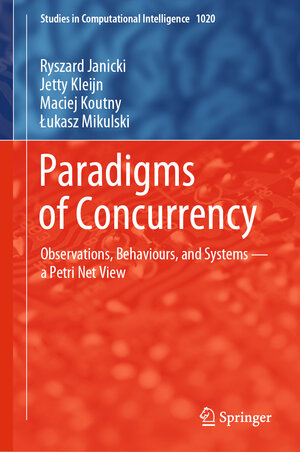
Paradigms of Concurrency
Observations, Behaviours, and Systems — a Petri Net View
von Ryszard Janicki, Jetty Kleijn, Maciej Koutny und Łukasz MikulskiParadigms of Concurrency: Observations, Behaviours, and Systems - a Petri Net View - Ryszard Janicki (McMaster University, CA) Jetty Kleijn (Leiden University, NL) Maciej Koutny (Newcastle University, UK) Lukasz Mikulski (Nicolaus Copernicus University, PL)
Concurrency can be studied at different yet consistent levels of abstraction: from individual behavioural observations via more abstract concurrent histories that can be represented by causality structures capturing invariant dependencies between executed actions, to system level constructs such as Petri nets or process algebra expressions. Histories can then be understood as sets of closely related observations. Depending on the nature of the observed relationships between executed actions involved in a single concurrent history, one may identify different concurrency paradigms underpinned by different kinds of causality structures such as partial orders. This book studies fundamental mathematical abstractions to capture and relate observations, histories, and systems. In particular, taking a Petri net view, we present system models fitting various concurrency paradigms and their associated causality structures.



